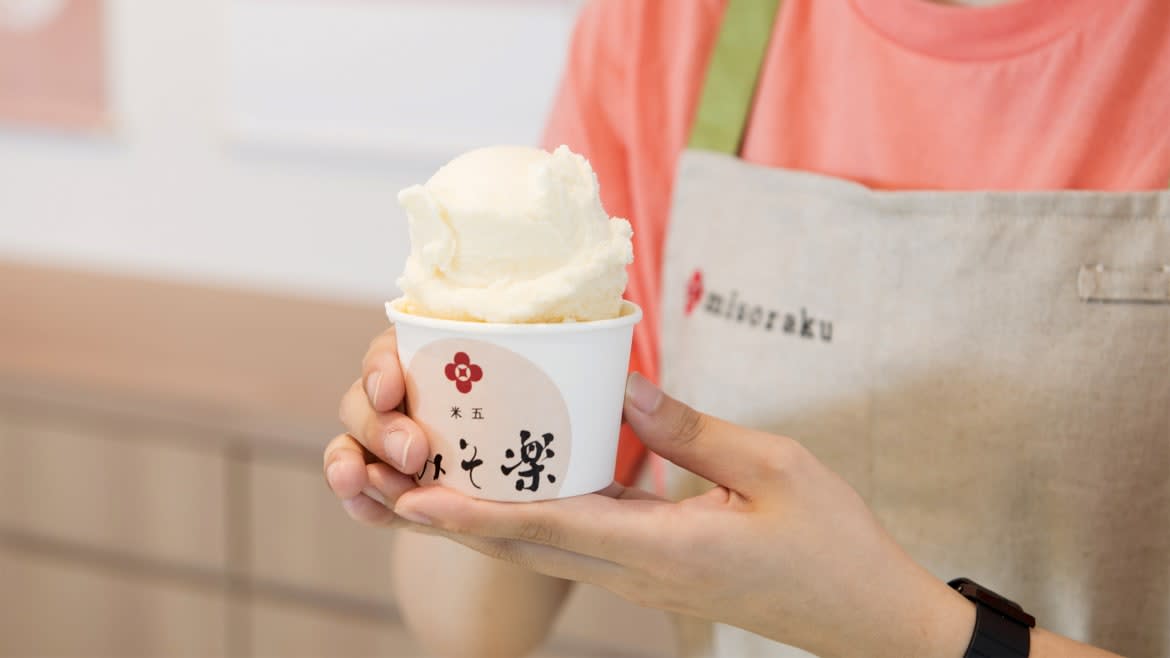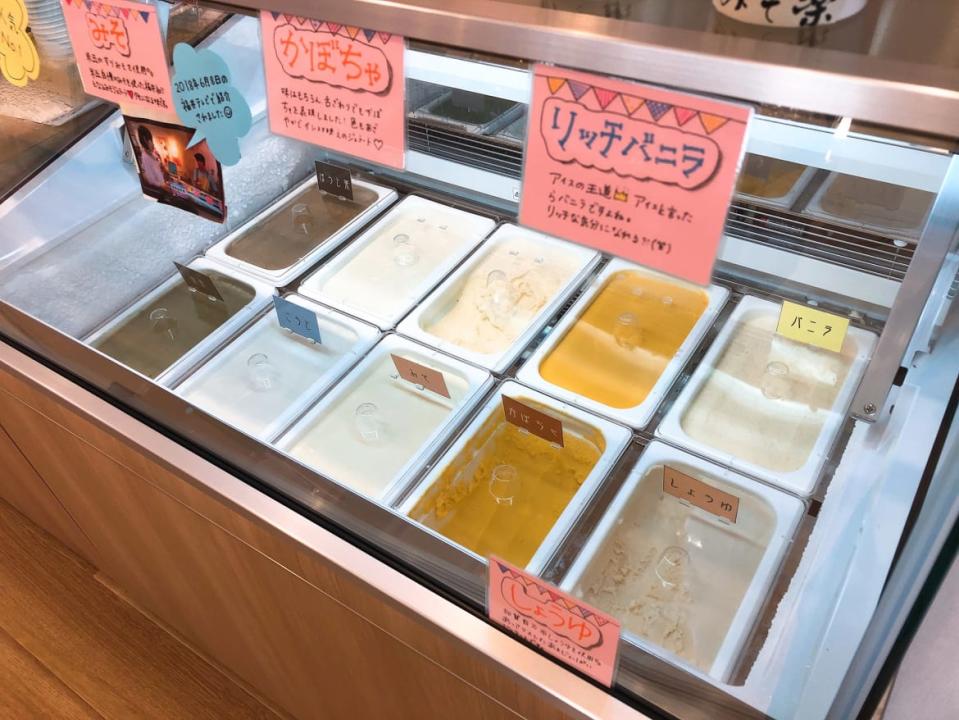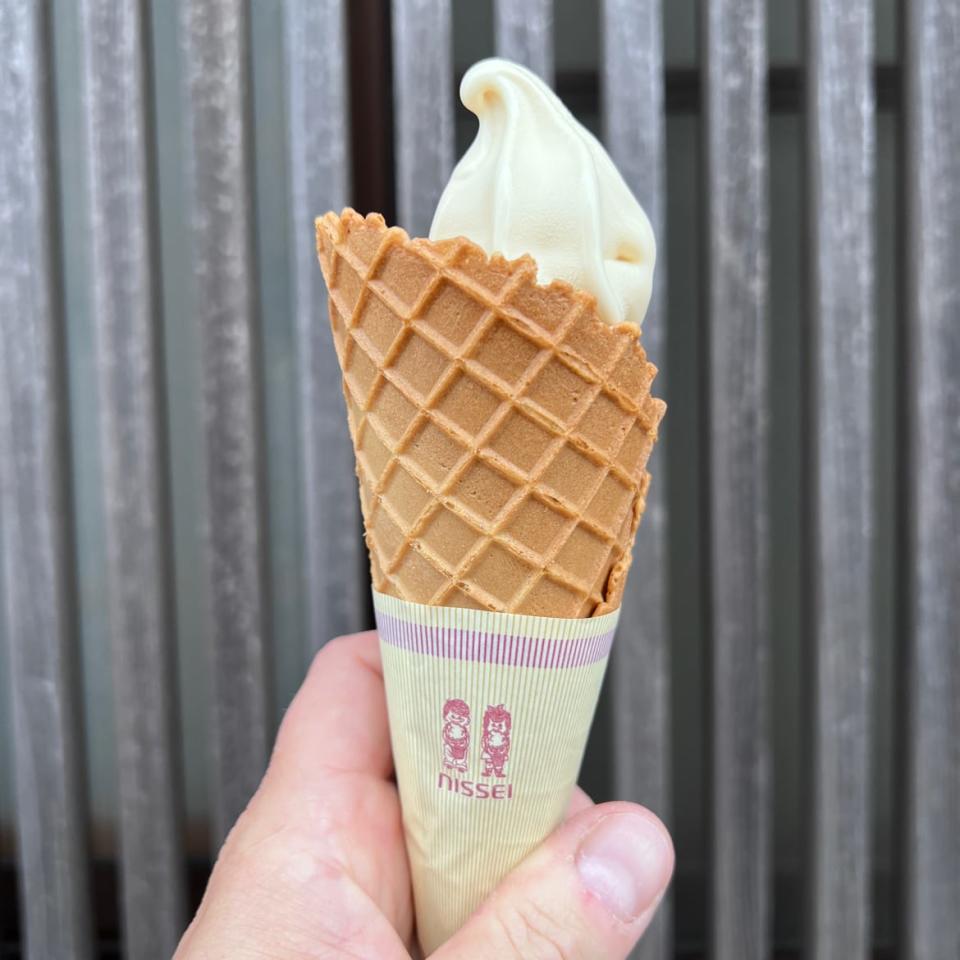In Japan, Funky Fermented Ice Cream Flavors Are All the Rage

Vanilla, chocolate, and strawberry are all beloved ice cream flavors in Japan, but forward-thinking confectioners are looking back at the country’s age-old fermentation practices to create some of the most interesting modern flavors.
For nearly two centuries, Komego has been making miso – fermented bean paste used as a foundational flavor builder in Japanese cuisine. Stepping into its well-appointed outlet shop in the west coast city of Fukui, Japan, there are lots of predictable items for on display, including a range of fresh misos in plastic-lined wooden barrels and tables brimming with miso-laced soups, sauces, and dressings. More surprisingly, there’s a cooler featuring six ice creams flavored with Komego’s products, including white miso with cream cheese and red miso dotted with crunchy almonds.
“People ask a lot of questions about those two,” says Kentaro Tada, president of Komego. “They want to know if the flavors really go together.”
It turns out these somewhat surprising combinations are good complements. The flavor of the white miso is quite mild, just a touch salty, which pairs well with the tang of the cream cheese. On the other hand, the red miso has a much bolder, saltier flavor, which goes nicely with the richness of the almonds.
The No 1-selling ice cream is flavored with the company’s amazake, a fermented rice drink. “You can taste the natural, mild sweetness of the rice,” says Tada. “People really love it.”

Tada was inspired to add the ferment-forward ice creams to expand sales beyond their largely female clientele and offer an easy-to-enjoy handheld treat, since many visitors to the shop are sightseers on bus tours. Ice cream’s universal appeal and portability made it the perfect solution.
For Manami Okada, the pastry chef of Acoya, a patisserie and restaurant located nearby in Eshikoto, the goal of making a ferment-accented soft serve came from a desire to cut down on food waste from the sake brewery that owns the tasting room where Acoya is located.. “I wanted to reuse the sake kasu [otherwise known as sake lees], a byproduct of sake making,” she explains. “The taste is often a very mature, aged, strong flavor. Usually in Japan, it’s used to make soup or pickles.”
However, the fresh lees she obtains from the brewery have a completely different flavor profile, tasting more like melon with a faintly floral aroma, making it ideal for sweet applications. “Even people who don’t normally like sake kasu like it,” says Okada who dispenses the soft-serve through a special nozzle to give it a cloud-like shape and serves in a slender maple flavored cone.
Acoya isn’t the only place that incorporates sake lees into a frozen treat. For over a decade, Asahi Shuzo’s Dassai, one of the country’s leading sake brands, had its sake lees turned into ice cream by Fuji Reika, a small husband and wife-owned ice cream parlor in Hakodate. The ice cream was only available at their shop and stores owned by Asahi Shuzo. During the pandemic, there was a precipitous drop in domestic sales, threatening the continuation of the ice cream. The company decided to try expanding their market for the ice cream by mass-producing it and exporting it to China. Surprisingly, Dassai Sake Kasu Ice became a bona fide success, resulting in a flood of requests for exports to other Asian countries.
Another scoop utilizing a fermented ingredient is soy sauce soft serve at Yamato Soysauce & Miso’s outlet store in Kanazawa. For many international tourists, the idea of using soy sauce in a dessert seems odd. But the creamy confection tastes like salted caramel, earning it a diehard following that has grown exponentially over the past 15 years. The creator, Yamato CEO Seiichi Yamamoto, says it started out as a fun experiment before unexpectedly becoming a signature item for his company and a top seller at their store.

Soy sauce ice cream at Yamato Soysauce & Miso.
All the fermented products going into these scoops start with a common ingredient: koji. It’s an edible mold, much like those found in charcuterie and blue cheese, crucial to the fermentation necessary to make sake, miso, and soy sauce. In the process, it adds deep umami notes of rich savoriness to the food it’s going in. To harness and highlight that rich, savory flavor, Sun Honest, an ice cream manufacturer in Numazu City, uses koji in four ice creams, including those combined with yuzu, strawberry, and green tea.
Ice creams infused with fermented products aren’t the only flavors in Japan that are adventurous by western standards. Daio Wasabi Farm in Azumino serves ice cream spiced up with wasabi, soft serve blackened with squid ink is a popular treat at the fish market in the port city of Yaizu, and in the Wakayama prefecture gelato is made with locally grown thin peas. Even Häagen Dazs has broadened their offerings for Japan, turning out unexpected flavors such as cherry tomato, purple sweet potato, and carrot.
“In Japan hyper-local ingredients play a big part in the food culture,” notes Yukari Sakamoto, author of Food Sake Tokyo, “so it's not unusual to find local ingredients in ice cream when traveling throughout the country. The unconventional flavors are also fun for marketing by the locals and something for visitors to look forward to when going to a new city. The Kamo Aquarium in Tsuruoka, Yamagata is famous for jellyfish ice cream. And Kanazawa is famous for its production of gold sheets. Many cafes sell soft serve with a sheet of gold leaf or ice cream parfaits will be dusted with edible gold.”
Merry White, an anthropology professor at Boston University, who has been studying Japanese food culture for over three decades, believes ice cream is a perfect canvas for boundary-pushing experimentation. “Because it’s a novelty, and wasn’t invented there, it doesn’t have to conform to any traditional Japanese construction,” she says. “It’s something malleable that can be made into new forms – unlike entrenched traditional foods.”
She compares ice cream to KitKat bars. Though there are only a handful of flavor options in the States, new flavors are constantly being produced in Japan celebrating seasonal produce, iconic desserts, beloved dishes, and regional specialties. “It’s all about having fun,” she says.
Get the Daily Beast's biggest scoops and scandals delivered right to your inbox. Sign up now.
Stay informed and gain unlimited access to the Daily Beast's unmatched reporting. Subscribe now.

